THE COLLECTIVE: The Grace Collection of African Art – From Pain to Passion
Brussels, 16 May 2018
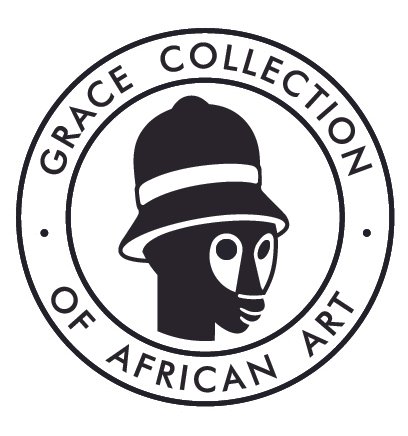
Collectors and art lovers populate the world of ancient African, Oceanic and American arts. Laurent Granier takes a look at their backgrounds, the psychological mechanisms behind their passions, their doubts, and their strategies. With them, he discusses objects, their histories, and the market.
Set up in a room at the end of the hallway, the Grace Collection of African Art benefits from a presentation which only the talent of its creator, a Belgian designer (who wishes to remain anonymous), repeatedly and internationally acclaimed for his work, could have brought to such a level. It is a visually structured space of scenes, with professional lighting, a comprehensive library, a desk for studying and a daybed for relaxing. Everything is well-considered, mastered and arranged, down to the pedestals, which are personalized with a silver Grace Collection of African Art seal. Our encounter took place in the family apartment in Brussels on January 23rd 2018.
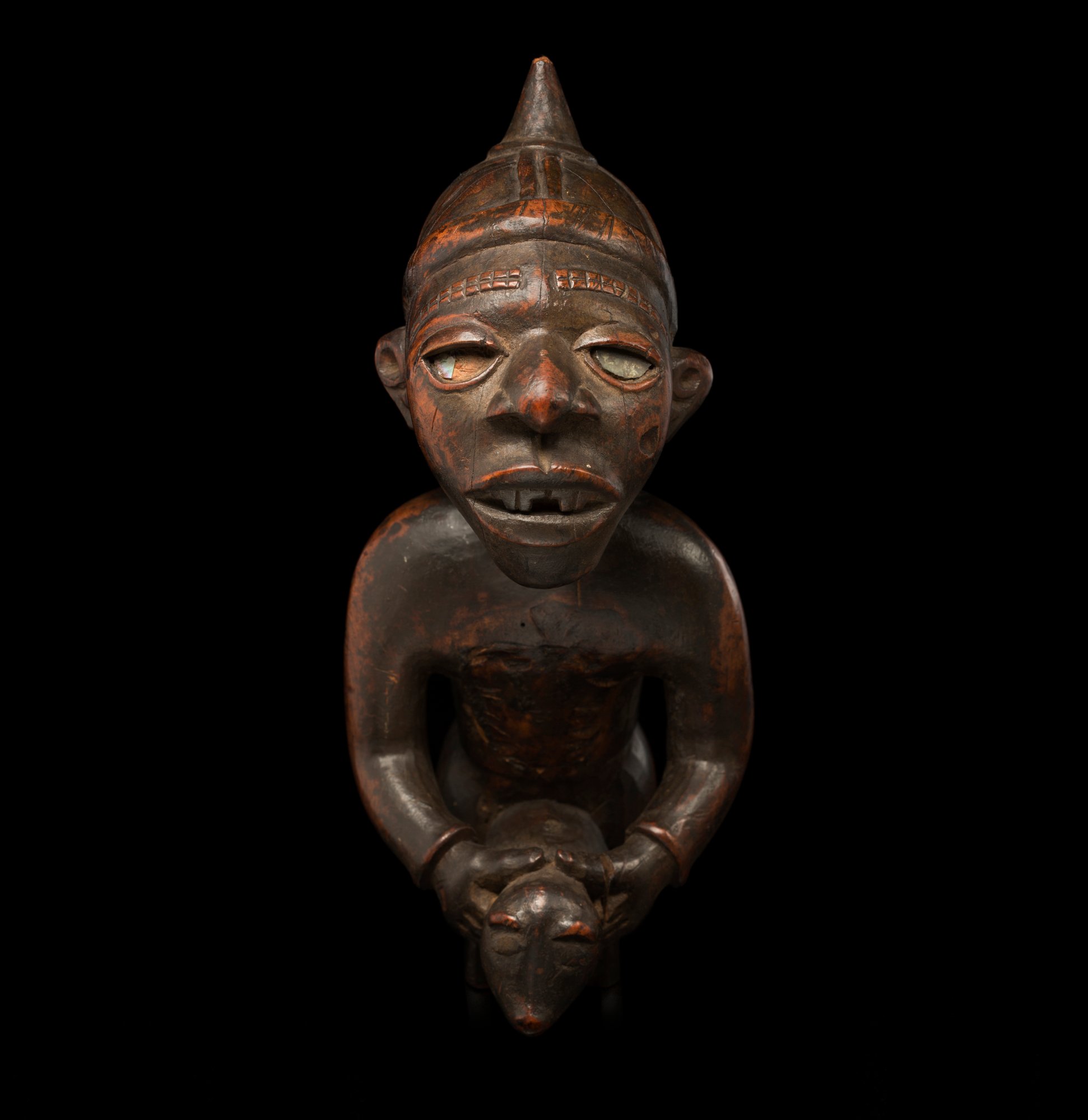
Kongo "nkisi" power figure (19.5 cm). Provenance: Gaston de Havenon (New York), Allan Manus (Palm Beach, FL, USA) who acquired it from the preceding on May 13th 1972. “This Yombe figure was created by the same artist as a figure in the Museum für Völkerkunde, Munich (inv. no. 93625), which was collected by Robert Visser between 1898-1904 (see Lehuard 1989, "Art Bakongo: Les centres de style", p. 260, Figure D 8-2-1, where it is erroneously identified as Vili). There is a postcard from the Scheut Mission showing a group of power figures - identified as ‘fétiches’ - in Kangu (Mayombe), that includes a figure by the same hand (see reproduction in Lehuard, "Art Bakongo: Les centres de style", 1989, p. 531, third figure from the right). Another figure from the Scheut Mission (Kangu), published in the book "Mayombe, Ritual Sculptures from the Congo" (Jo Tollebeek (ed.), Lannoo Publishers, 2010, p. 110-111), seems to be the work of the same sculptor as well (see facial features such as teeth, nose, eyes, eyebrows, and especially the ‘signature’ ears). I therefore call the sculptor of these figures the ‘Master of Kangu’. A fifth figure which I would attribute to this Master hand was sold at Sotheby’s New York (The Collection of Allan Stone, May 18th 2014, Lot 49).”
The Complex Matter of Evaluating Forms
“I manage the design team for a major brand of home products in three studios – in Asia, the United States and Europe. As someone who conceives of products, I have been working on the function and aesthetics of tridimensional objects for over twenty-five years. People often believe that the appreciation of forms is subjective. There are of course personal preferences, and the aesthetic quality of an object is not easily quantifiable, but that does not change the fact that some sculptures and forms are strong while others are weak. In my opinion the appreciation of forms should be thought of as a complex matter rather than as a subjective one.”
I quickly realize that every piece in this collection has been chosen with a great deal of care. “There are very few objects from which I have separated myself in the approximately ten years I’ve been collecting. Generally, when I have adopted an object, it has been with the intention of keeping it in my collection, and that object is moreover in some sense being revitalized as new acquisitions come in.” Yombe, Shoowa and Tetela textiles open the viewing and are followed by an ensemble of some ten miniature figures from the Congo Basin, all of very high quality. A striking Yombe mask is set up at the back of a large black cube. Two finely decorated Congolese weapons, the products of the Kasaï kingdom’s finest foundry workshops, are mounted onto a dark wall panel. This is a feast for the eyes. One of the most beautiful Luba drums I have ever had the pleasure of beholding is among the non-figurative works in the collection. “And yet I found it at a small auction in Germany” the collector, who is more accustomed to the bigger sales and to dealers with established galleries, confides to me. An exceptionally beautiful Yombe figure, a Kongo fetish and its dog formerly in the Gaston de Havenon collection, and a magnificent Kusu knife are among the figurative objects that especially draw my attention.
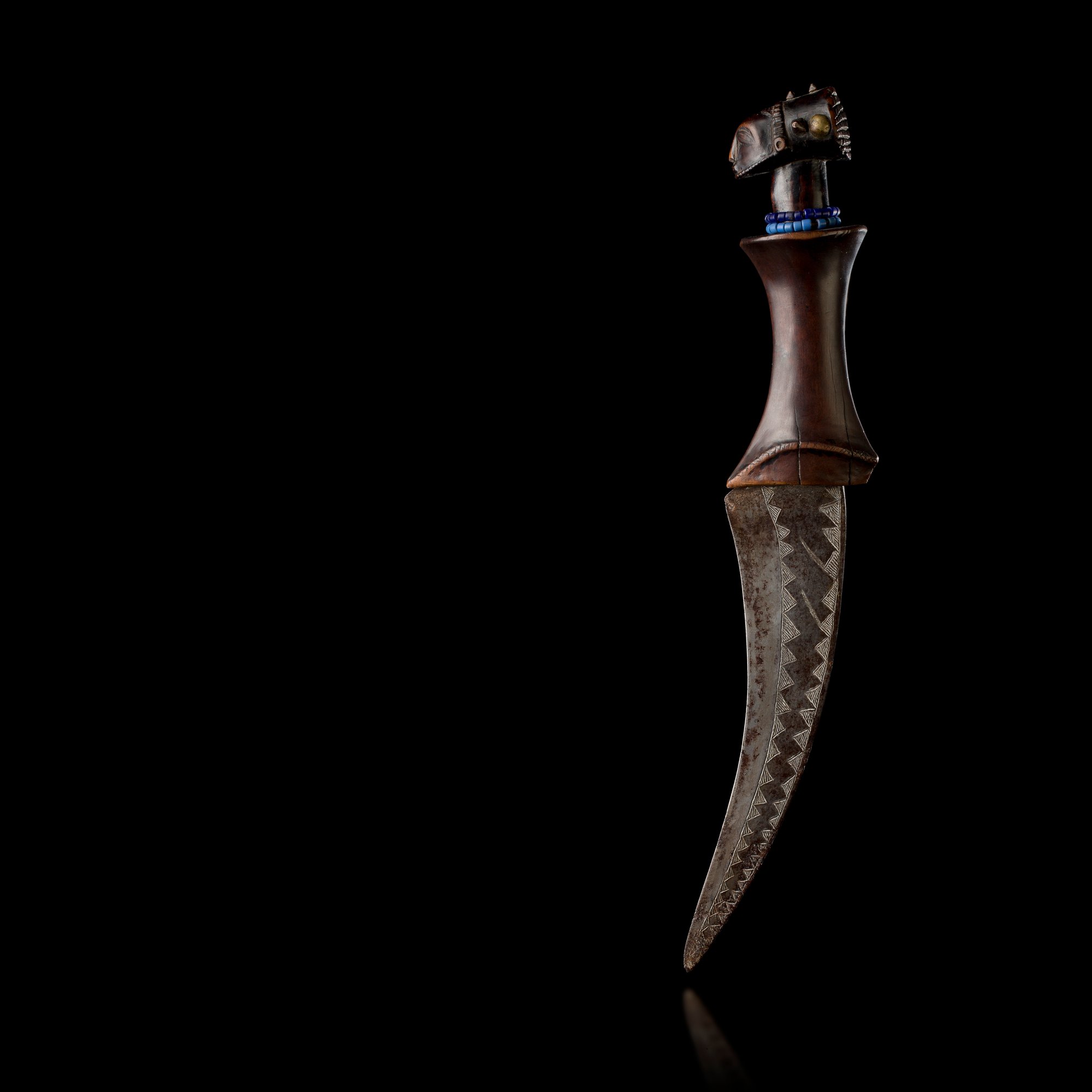
Kusu knife (37 cm). Provenance: Jean Marc Bordas collection, France. “Knives are among the most sacred items in a Luba king's treasury, and also constitute part of the regalia of secret-association members and spirit mediums. These otherwise utilitarian tools become objects of ceremony and are exclusively shaped with sculpted human figures.” (William Dewey and S. Terry Childs, in "Memory: Luba Art and the Making of History", New York, 1996, p. 62). “The curved blade of this knife suggests the influence of Arabs, who arrived in the Kusu region around 1840.” (Mark Leo Felix, personal conversation with the collector, Brussels, February 23rd 2013).
Studying and Selecting
“If a work of art is in the realm of the fields I have expertise in - Kongo or Luba – then I can make an immediate pronouncement on its quality. For other regions of the Congo, I need to study and do research, and for areas outside of Central Africa, I simply ask for advice from experts, as I did for my Dogon for example.
We mention a little Lega figure at a preview for an auction, which will come up for sale in a couple of weeks. Examining the assembled documentation and arguments given for the piece, I realize how serious the research presented really is. “What I like about the auction houses is that one has about a month from the date the catalog comes out to study and make a decision without any pressure. On the day of the sale, I know exactly what I am bidding on.”
BRAFA will be opening in a few days, and there are no less than five invitations to it lying on his desk. “I have purchased objects from about twenty dealers, and as my experience grows, I become increasingly comfortable with making decisions quickly, including at fairs. My advice to the beginning collector would be to educate himself before spending lots of money. It takes time to understand what is good and what is not. I would also encourage him to try to buy the best example of any category of object he acquires. He will be better off with a fantastic Kuba textile than with a mediocre Kuba cup. Buy only from dealers you appreciate and whom you trust, however good a deal someone may appear to be offering you. Pay promptly when you have received everything in good order, including a certificate of authenticity, which must also show the date the dealer attributes the piece to. That greatly accelerates the whole process. And if an object does turn out to be a fake, then simply return it to the dealer rather than trying to foist it off onto a next victim.”
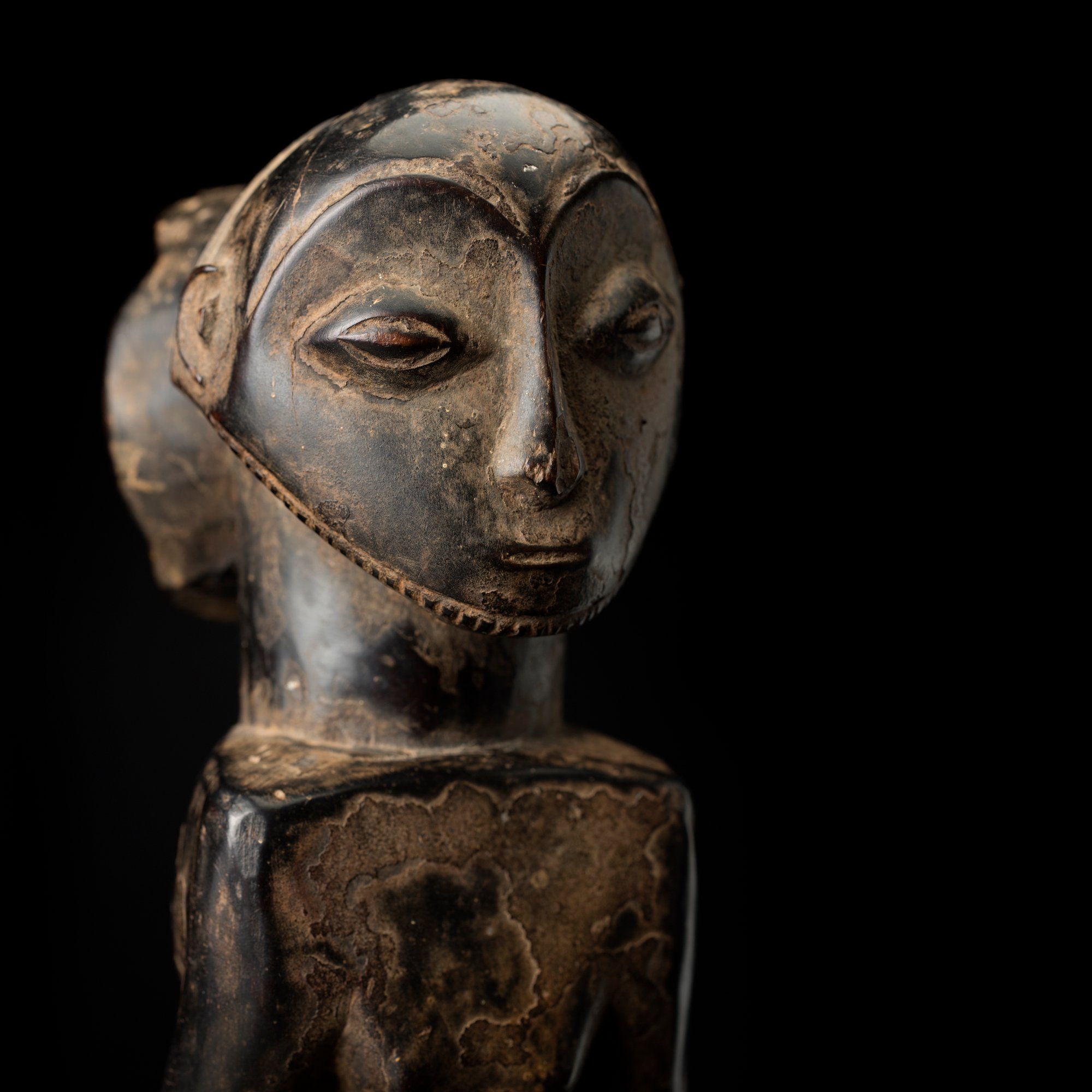
Hemba "singiti" ancestor figure (36 cm). Provenance: Josef Gollwitzer, Munich (acquired in Paris in 1940), Margit and Botho Fehler, Munich (by family descent), Leslie Sacks, Los Angeles. Published in Amanda M. Maples (ed.), "African Art from the Leslie Sacks Collection", Milan, 2013, p. 60-63, fig. 23. “Historically, Hemba leadership was of a highly decentralized, segmentary nature. Villages, which were variously named for titular heads, well-remembered ancestors, or particular lineages, were autonomous entities within which individuals identified themselves primarily in relation to their extended families and clans. Each Hemba clan was identified with its own history of conquests, migrations, alliances, and battles. Its genealogy, which would have been well known going back eight to fifteen generations, was essential in establishing that group's title to a specific area of land.” (Alisa LaGamma, "Heroic Africans – Legendary Leaders, Iconic Sculptures", © 2011, Metropolitan Museum of Art, New York, p. 225-228).
Prudent yet Profound
“I often play this game in my head: I try to identify the heart of my collection. But I can never succeed in narrowing it down to a single object – that is impossible.” Even if the result seems natural, a complex approach lies behind the construction of the Grace Collection of African Art. “I would describe my way of looking at things as prudent but profound. Prudent, because in my profession, I have learned to doubt unrelentingly: is the solution conclusive and elegant? Or must I completely revise the concept? Profound, because I take into account the object’s multiple dimensions, including ethnographic data, use, aesthetics, expression, age, surface, and so forth, and I compare it with all of the objects in the corpus of works it is a part of. These are fairly objective aspects, but at the same time, art must give rise to an emotional response. I ask myself: does the object have an intelligence in this respect?”
This recourse to science and to the “intelligence of forms” is certainly an integral part of our collector’s approach. But when he cites the collection of artist Jean Willy Mestach as an example – “for its capacity to reveal a magnitude which exceeds and transcends the quality of any individual object” – I ask myself if it is not simply this work of profound observation which is at the foundation of some of the most beautiful collections of our era.
Marc Leo Felix is one of the people who influenced his choices, and “he is not stingy with his opinions of objects. Every time, he discovers new aspects which I otherwise wouldn’t have paid attention to.” Bruno Claessens (thanks to whom the collector and the author became acquainted by the way) is another person who “has given me advice on pieces I was considering, and introduced me to pertinent researchers, dealers and collectors in support of my collecting activities. Bruno has very unequivocal opinions but I always appreciate his directness.”
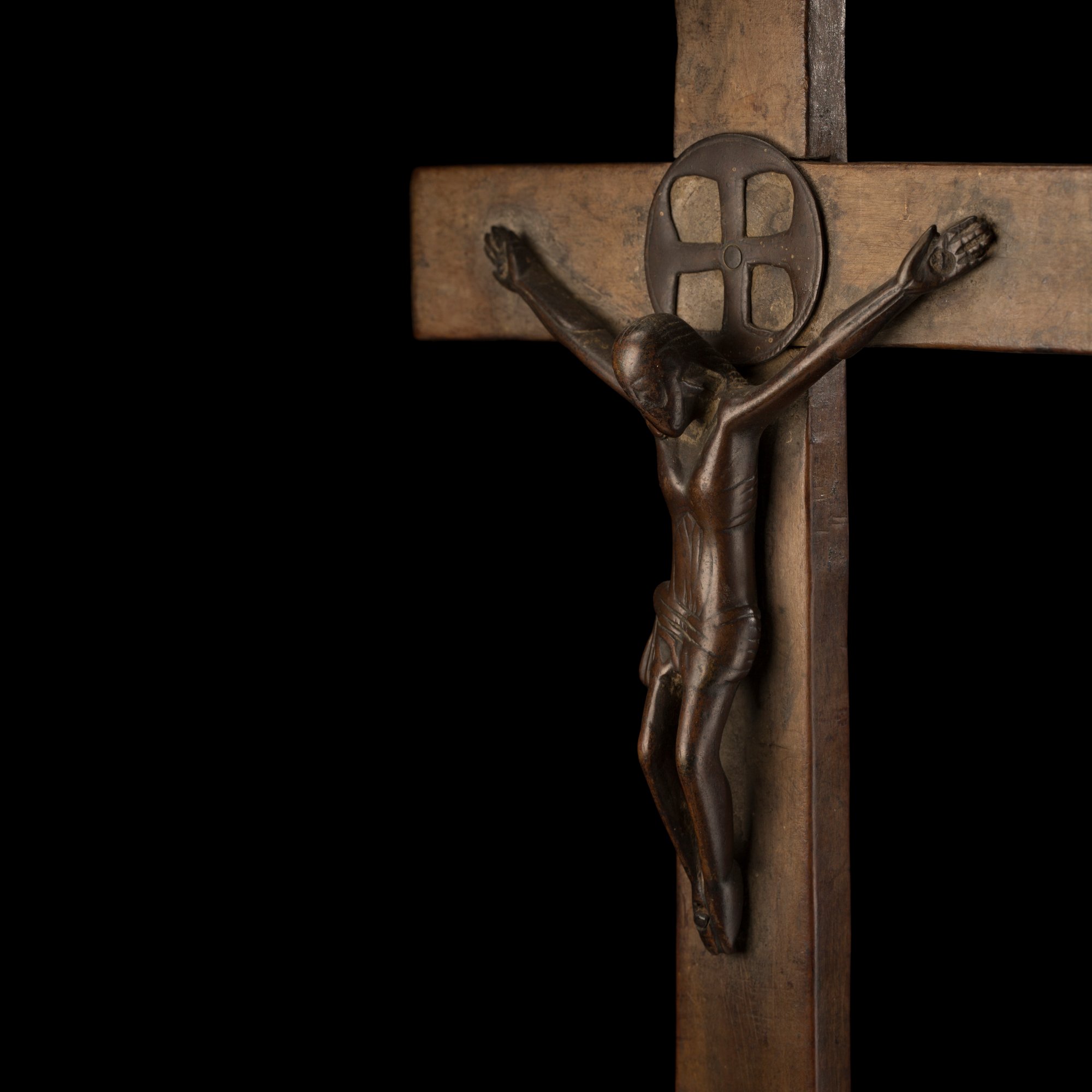
Kongo "nkangi kiditu" crucifix (40 cm). Provenance: old Belgian collection, R. Muir Collection, Brussels, Gallery Yannik Van Ruysevelt, January 2017. “When I started researching this object, I was put off at first by Rob.L. Wannyn’s "L’Art ancien du métal au Bas-Congo" (1961) which calls the Christ figures in this style (plates XIV-XV) ‘Spanish Christs’ and assumes that they come from a European foundry. I was reassured, however, when I read what Philippe Malgouyres wrote in the Quai Branly publication (Julien Volper, "Du Jourdain au Congo", 2015, p. 173-174) concerning a very close example from the Royal Museum for Central Africa (in Tervuren): “The Christ shown in fig. 123 is a superb example of their [the Kongo artists’] work. The harmonious proportions, the miraculously rendered anatomical details, the diagonal lines of the loincloth, and the angle of the head demonstrate a genuine understanding of the prototype's forms. This depiction of Christ is sometimes referred to as a 'Catalan Christ', but this is a false analogy to certain Spanish works: it is completely unrelated to the allegedly harsh style of medieval sculpture in the Iberian Peninsula. On the contrary, this model is based on the most sophisticated works of Medici Florence, and this type of crucifix had a truly global reach at the time.”
Fragments of the Invisible
“My interest in African art goes back to the times when I was studying design at the beginning of the 1990s. But after the kidnapping of my daughter Grace by her Congolese mother, my collection began to play another role - deprived of the chance to share my parental love with my daughter, I immersed myself in the study of Congolese cultures and in collecting their objects. When I realized after a few years to what extent my passion had been driven by the loss of Grace, I dedicated my collection to her and named it the *Grace Collection of African Art.*”
“The works of art in traditional Africa were as much fragments of an invisible system (a reference to the eponymous book on the René and Odette Delenne collection), of beliefs, of a social order or of political structures, as they now are, in the context of museums and private collections, the material proof and expressions of the traditional African cultures which they represent on a more universal basis. Beyond their importance as ethnographic works or their aesthetic qualities, the objects in my collection thus harbor an affective dimension, the love for my daughter Grace. In this respect, they are once again *fragments of the invisible.*”
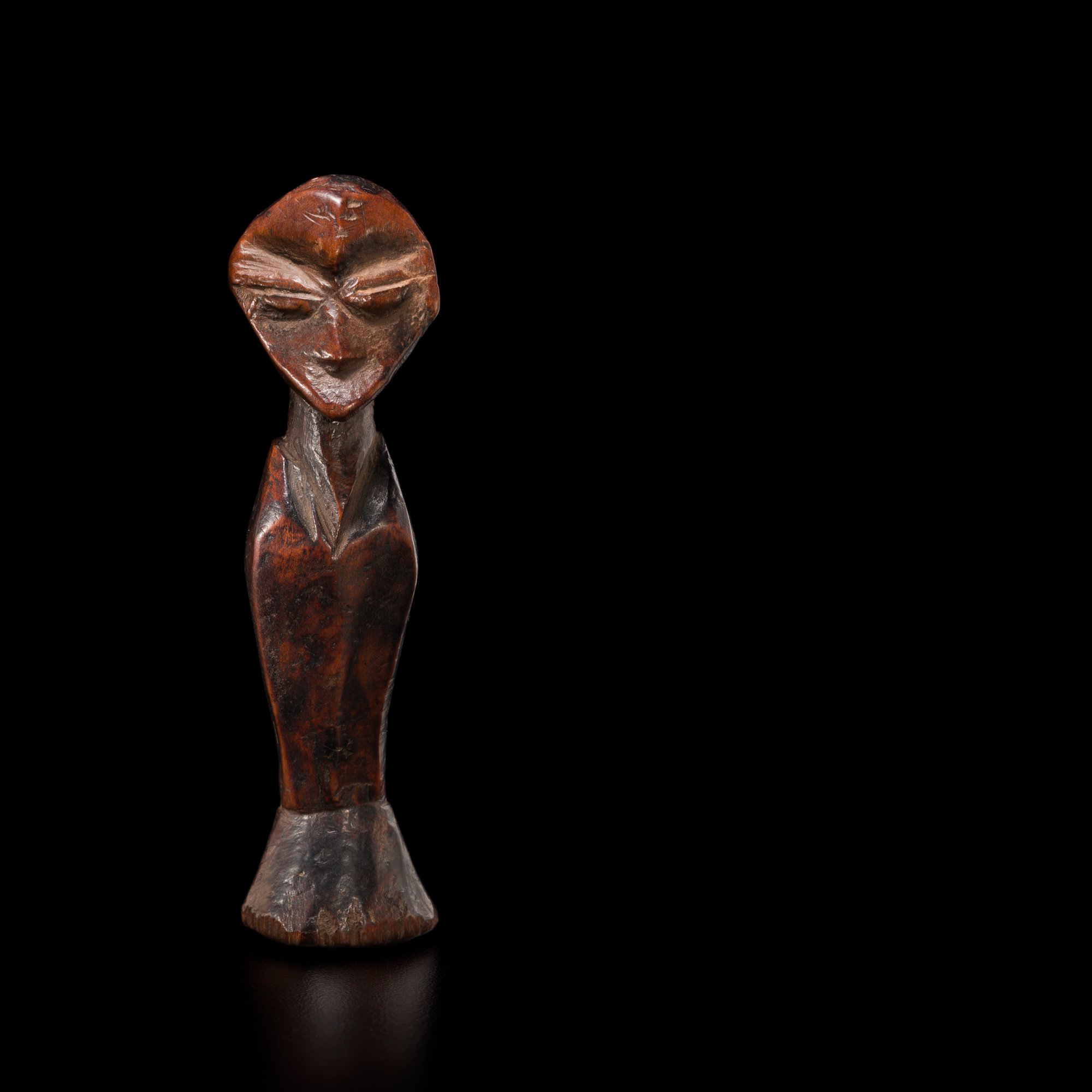
Lega "kalimbangoma" figure (8.8 cm). Provenance: Alexandre Safiannikoff collection. “Alexander Safiannikoff (1903-1988) broke a three-century-long tradition of familial involvement in the imperial Russian army to arrive in France in 1926. There, he became a geologist and geological enginner in Nancy. From 1929 to 1931, he prospected for a French mining company, in Chad, Ubangi-Shari and French Equatorial Africa. In 1931, he continued his career in the Belgian Congo and was hired for a mission in the Maniema by the company of the Baron Empain. Alexandre Safiannikoff stayed in Congo for more than 40 years, mainly in the provinces of Kivu and Maniema. He had the chance to observe the Lega People and their art. He collected numerous objects and wrote a long essay on the objects related to the Bwami organization.” (Native auction catalogue). According to Daniel P. Biebuyck's "Lega, Ethics and Beauty in the Heart of Africa" (KBC, 2002): “Wherever they [the "kalimbangoma" anthropomorphic figurines] occur, the small wooden objects are owned by the second highest grade (lutombo lwa yananio) or by "kalonda" women, a female grade complementary to yananio for men […]. In the men’s rites the bami leave the initiation house holding their *kalimbangoma in cupped hands or tucked in their waist belts. They deposit them standing in a long row, preceptors pick them up one by one or up to three at a time and dance with them, sometimes caressing the image or placing the statues on their backs down on the ground.”*